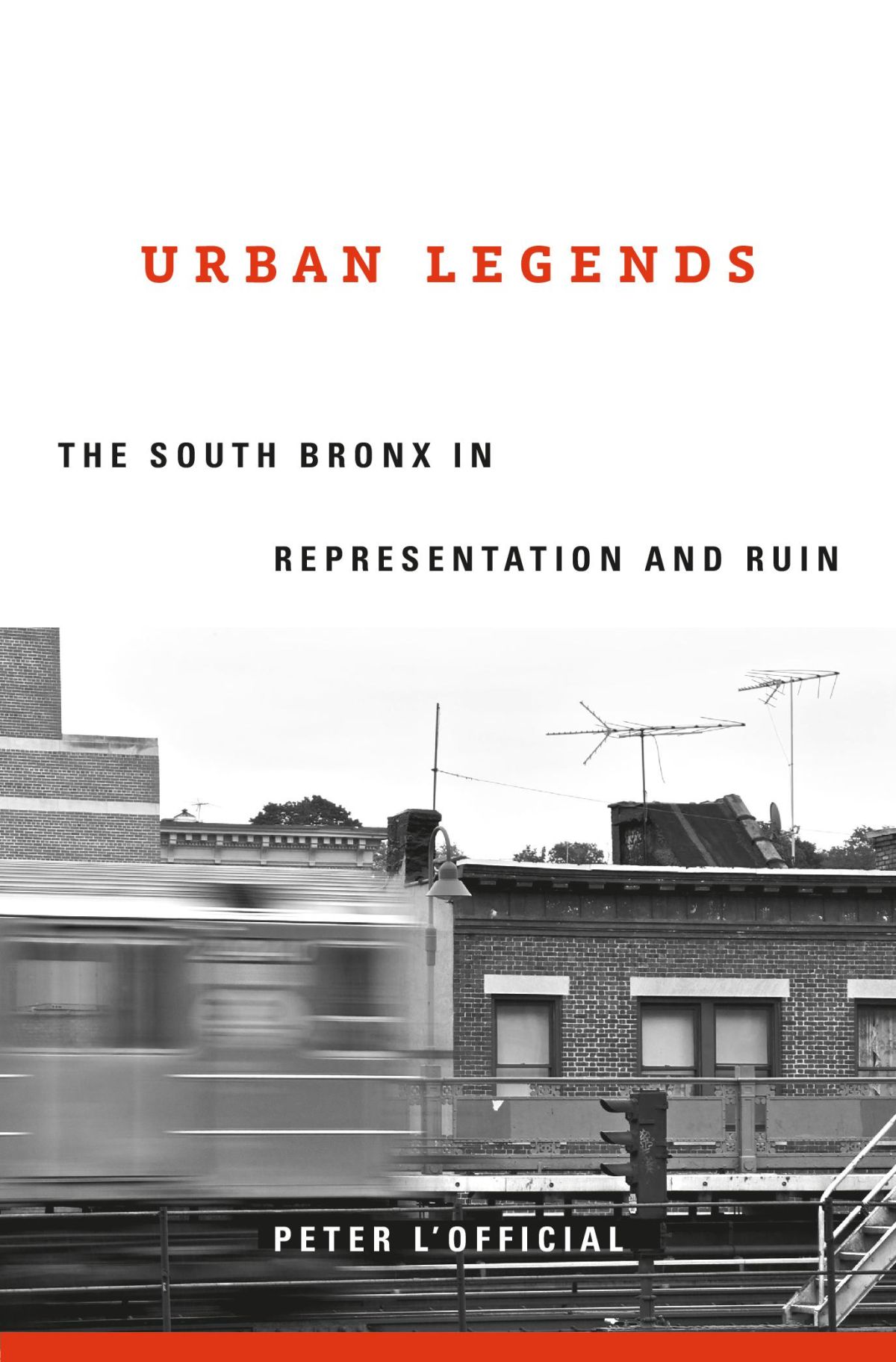Given time, every discussion of New York in the 1970s becomes a discussion of the South Bronx. When documentary filmmakers need to indicate the decade of New York’s municipal failure, the rubbled lots of the South Bronx mark the moment and do the failing. When overpaid Netflix directors need to gloss the Black experience in New York in the 1970s, an abandoned tenement is cast as the silent buddy. The South Bronx is a real place dogged by the surreal, somehow always most itself when on fire. But New York in the ’70s was not a burning dumpster, and the South Bronx was not a crater full of dancers and bad guys. Many artists have been slow to renounce the feast of that particular assumption, and keep remembering the same period of the South Bronx, forcing their needles to skip back again and again.
Into this metonymic fog comes Peter L’Official’s Urban Legends. L’Official shows us, slowly and precisely, how novelists and artists and civil servants have deployed myths of the South Bronx as both backdrops and blank screens. Some of those myths have been canon for decades. “The Bronx is burning,” as L’Official reports, was not something announcer Howard Cosell made up (or even said!) during the 1977 World Series, though this origin story for the phrase is plausible. During the second game, as the Yankees played at home against the Dodgers, an abandoned school building burned near Yankee Stadium, visible to everyone watching at home. But those four words are the title of a 1972 BBC documentary about the borough’s arson epidemic. Myths are tenacious when one parent is a fact. Buildings did burn, and, as L’Official quotes one historian, the South Bronx was the “most extensively abandoned piece of urban geography in the United States.”
Urban Legends is a parabolic dish microphone pointed at history, collecting the waves that outsiders have bounced off the South Bronx. L’Official gathers representations of the South Bronx found in fiction, like Don DeLillo’s description of urban tourism in Underworld, and the ways it has been filtered through journalistic language. He proposes that classifications like “inner city” and the “ghetto” are also “versions of urban legends as well.” L’Official presents these ideas as euphemisms and “coded spatial signifiers for race,” which they are. In fact, the focus of Urban Legends is squarely on the views of those who never lived in the neighborhood. Very little of it touches on how the residents of the South Bronx represented themselves, and L’Official acknowledges this several times, best of all in the conclusion: “Though Urban Legends falls short of discussing ‘all kinds’ of artists, its aims were, and are, aligned with those of the Fort Apache Band, as articulated by Andy González: showing that art can, and does, emerge from an imperiled environment.” L’Official seems to know that hip-hop and graffiti don’t need his help at this point. He writes that graffiti artists in the South Bronx—“most of whom pointedly referred to themselves as writers—would no doubt tell you, graffiti was Bronx literature, and a populist form at that, which hardly required an agent or a publishing contract to reach an audience.”
